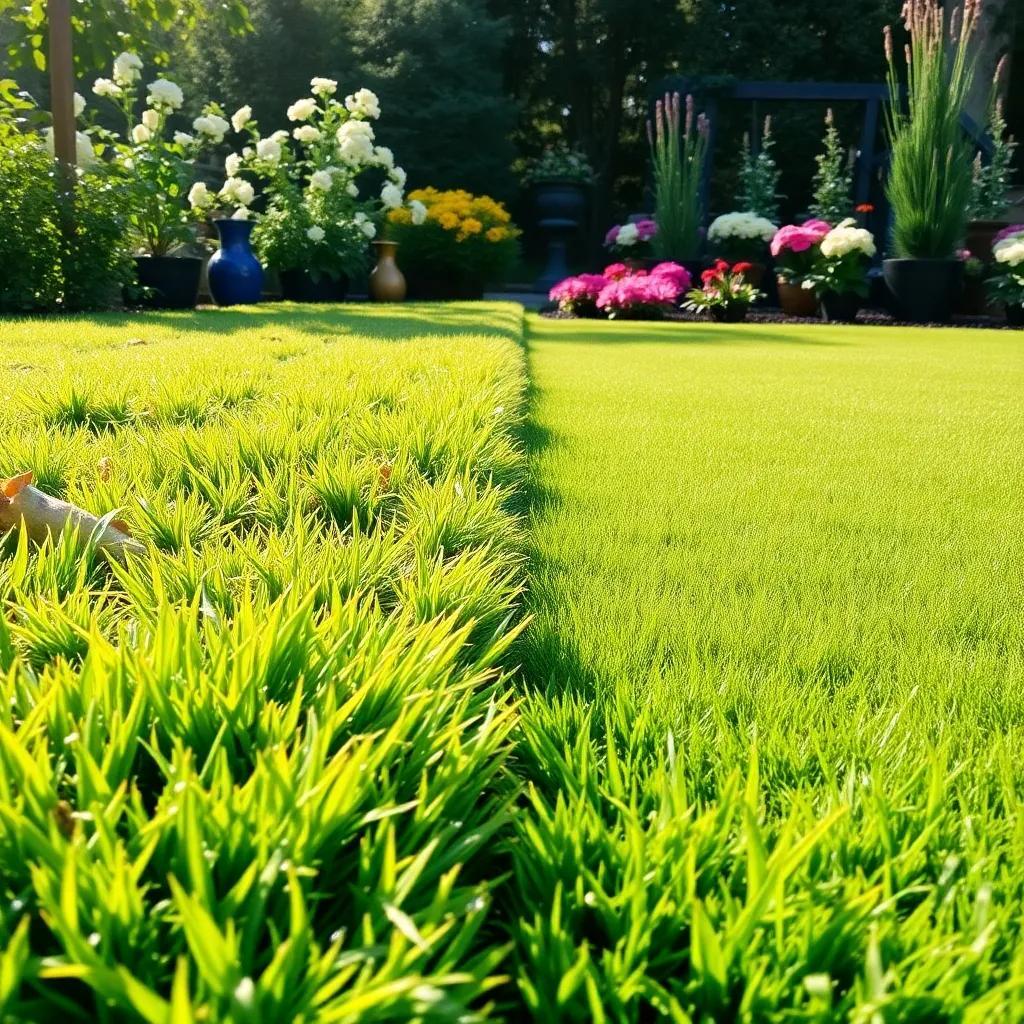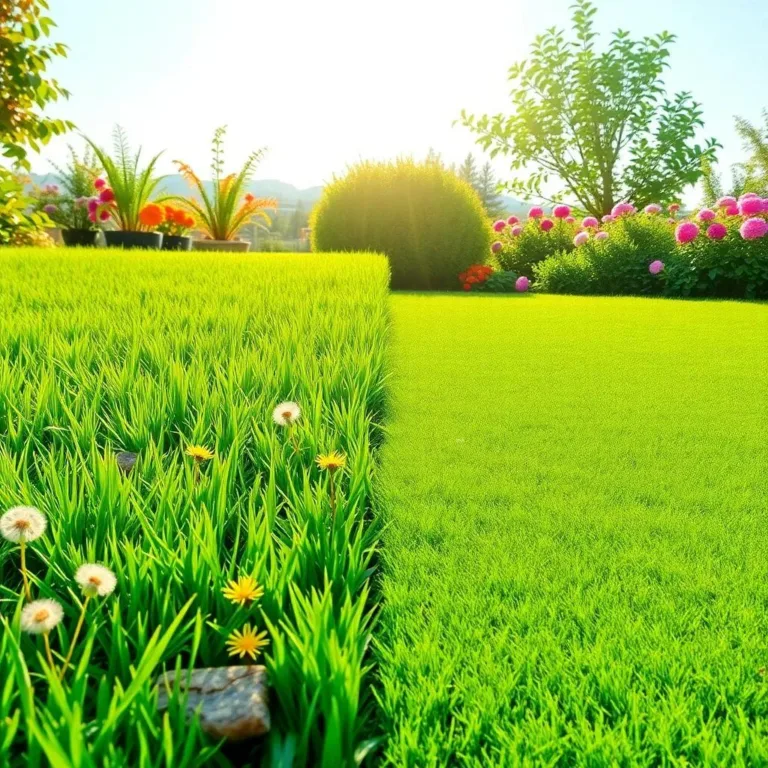Are you tired of spending your weekends mowing the lawn or battling pesky weeds? I totally get it! In this article, we’ll explore the exciting showdown between fake grass and real grass. From their looks and maintenance to durability and costs, you’ll discover which option might be the perfect fit for your outdoor space. Let’s jump in and find out which green is the place to be!
Appearance and Texture of Fake Grass vs. Real Grass
When it comes to the appearance of your lawn, I think we can all agree that a lush, green space is what we want! But how does fake grass stack up against the real deal? Let me tell you, advancements in artificial turf have made it look pretty convincing!
Modern synthetic grass is crafted to mimic the color variations of real grass. You’ll see shades of green, blended with hints of brown, giving it that authentic touch. Some people are surprised to find that fake grass can actually look more vibrant than natural grass! We all know that maintaining a perfect lawn can be a challenge, with real grass often becoming patchy or discolored. Synthetic turf? It stays stunningly green all year round!
Now, let’s talk about texture! While some might worry that fake grass feels like a plastic mat, the truth is that many brands have made significant strides in this area. They use special fibers that not only look good but also feel great underfoot. Picture walking barefoot on soft, resilient blades of grass—sounds delightful, right? I often enjoy rolling around on it with my kids or pets, and they don’t seem to mind either!
To sum it up, while fake grass may not be perfect, it has come a long way in mimicking the real thing. With such a variety of options, I can find artificial turf that matches my vision for a beautiful garden space!
Maintenance Requirements: Fake Grass vs. Real Grass
Let’s face it—lawn maintenance can be a real chore! Who has time to mow, water, and fertilize every week? This is where fake grass shines like a superhero! When I switched to synthetic turf, my weekends suddenly became a whole lot more fun!
Here’s a quick comparison of the maintenance needs for both options:
- Real Grass:
– Regular mowing (ugh, the dreaded chore!)
– Watering during dry spells—goodbye, precious water!
– Fertilizing to keep it lush and green.
– Weeding is like a never-ending battle!
- Fake Grass:
– No mowing—yay for more free time!
– Minimal watering—just the occasional rinse to keep it fresh!
– No need for fertilizers, herbicides, or pesticides—great for my peace of mind!
– A quick clean-up of leaves or debris, and I’m good to go!
With fake grass, I spend less time sweating in the sun and more time enjoying my outdoor space! Just imagine: instead of pushing a mower around, I can kick back, sip on a cool drink, or play catch with my kids.
So, if you’re like me and want to spend more time enjoying your lawn instead of maintaining it, artificial turf might just be the best option! Say goodbye to the weekly grind and hello to leisure!

Durability and Lifespan of Synthetic Turf vs. Natural Grass
When I think about durability, it’s hard not to appreciate the strength of fake grass! In our busy lives, we need a lawn that can handle playtime and the elements, right? Unlike real grass, which can wear down in high-traffic areas or suffer from pesky pests, synthetic turf is designed to take a beating and come out looking great!
Here’s what I’ve learned about the lifespan of both options:
- Real Grass:
– Lifespan: Typically 5-10 years, depending on care.
– Susceptible to wear: High foot traffic can lead to bare patches.
– Weather effects: Extreme heat or cold can damage it.
– Requires reseeding or resodding: Patchy areas need regular upkeep.
- Fake Grass:
– Lifespan: Can last anywhere from 15 to 25 years or even longer with proper care!
– Durability: Built to withstand heavy usage, kids playing, and pets running around.
– Weather resistant: Not easily affected by rain, snow, or intense sunlight.
With artificial turf, I can kick back and relax! I don’t have to worry about patchy spots or reseeding. It remains lush and beautiful, season after season. Plus, with the right installation and maintenance, I can enjoy my green oasis for years to come without the constant reworking that natural lawns often require. Isn’t that a relief?
Environmental Impact: Comparing Fake Grass and Real Grass
When we think about making our outdoor spaces beautiful, we should also consider our environment! That’s why comparing the environmental impact of fake and real grass is essential for every homeowner. Let’s dive into the good, the bad, and everything in between.
Natural Grass:
- Pros:
– Oxygen Production: Real grass absorbs carbon dioxide and releases oxygen, which is great for our air quality!
– Habitat Creation: A lovely lawn can attract insects, birds, and other wildlife, promoting biodiversity.
- Cons:
– Water Needs: Real grass requires a significant amount of water, especially in hot months. This can lead to higher water bills!
– Chemical Usage: Frequent fertilizing and pest control can contribute to chemical runoff, which affects local ecosystems.
Artificial Turf:
- Pros:
– Water Conservation: No need for regular watering! This helps save water and reduce bills—what’s not to love?
– No Chemicals: Since fake grass doesn’t need fertilizers or pesticides, it’s often a safer bet for our environment and families.
- Cons:
– Material Concerns: Some fake grass products are made from non-biodegradable materials. Choosing high-quality, eco-friendly options can help address this issue.
– Heat Retention: On hot days, synthetic turf can become quite warm underfoot, which might not be comfortable for pets or kids.
So, while real grass has its eco-friendly perks, fake grass can help save water and reduce chemical usage. It’s all about making choices that suit your lifestyle and values!
Cost Analysis: Long-Term Expenses of Fake Grass vs. Real Grass
Let’s chat about the cost—because let’s be real, every homeowner wants to know what they’re spending their hard-earned cash on! A lawn is a big investment, so I want to make sure I’m getting the most bang for my buck.
Initial Costs:
- Real Grass:
– Installation Costs: Costs can vary, but installing and establishing a natural lawn often involves soil preparation, seeds, or sod. This can add up quickly!
- Fake Grass:
– Higher Upfront Costs: Artificial turf generally has a more significant initial investment, but it can pay off in the long run!
Long-Term Expenses:
- Real Grass:
– Maintenance Costs: Regular mowing, watering, fertilizing, and weed control can eat into your budget over time.
– Repairs: You might need to reseed or resod areas that get worn out or damaged, which can be an added cost.
- Fake Grass:
– Lower Maintenance Costs: Once installed, the ongoing expenses for fake grass are minimal. Occasionally cleaning or repairing is typically all you’ll need.
– Longevity Factor: With a lifespan of 15-25 years, you might find that the initial investment really pays off!
When I weigh the upfront costs against the potential savings in maintenance, it becomes apparent that fake grass can be a cost-effective choice. It allows me to enjoy a beautiful lawn without the constant upkeep and expenses that come with real grass. So, whether it’s a peaceful garden or a fun play area for my kids, I feel good about my choice!

